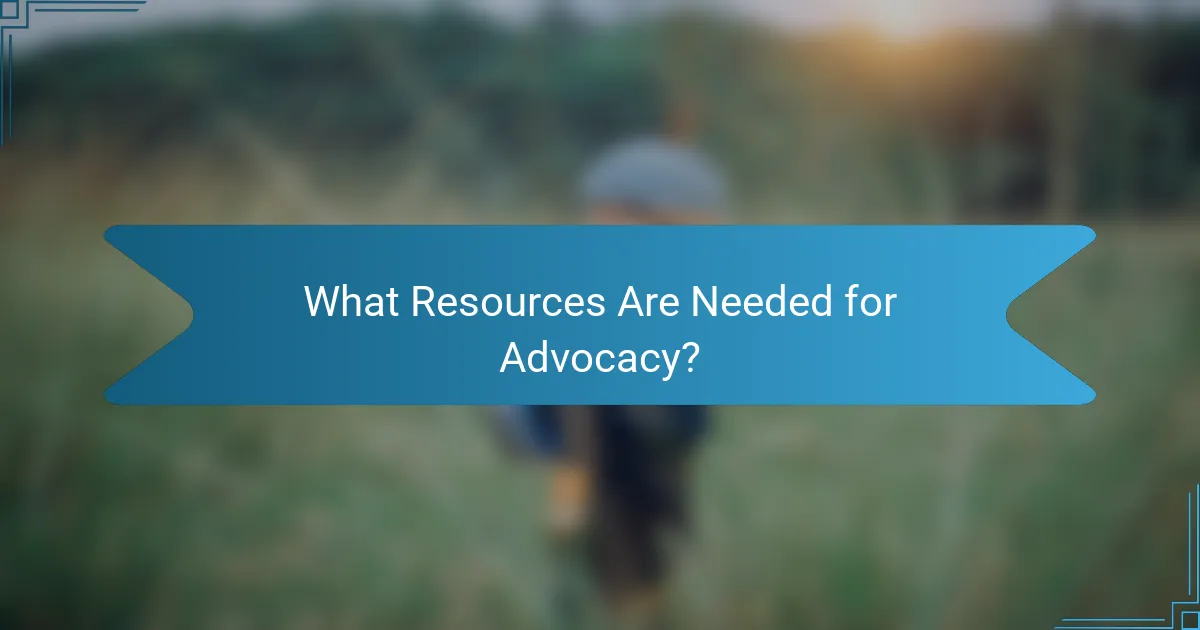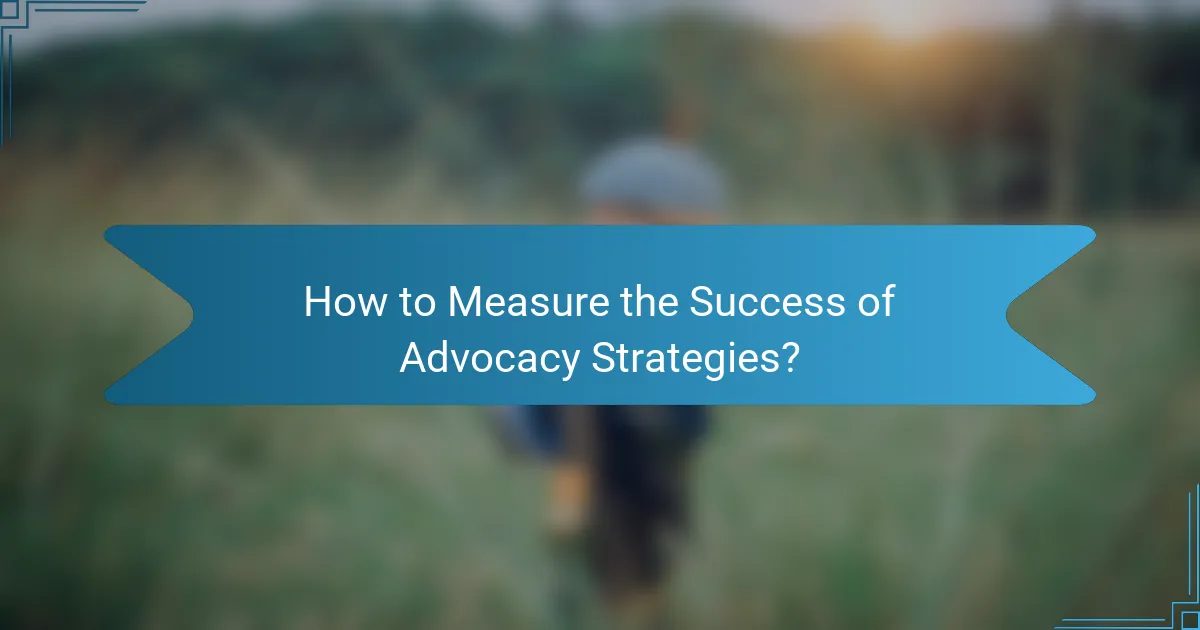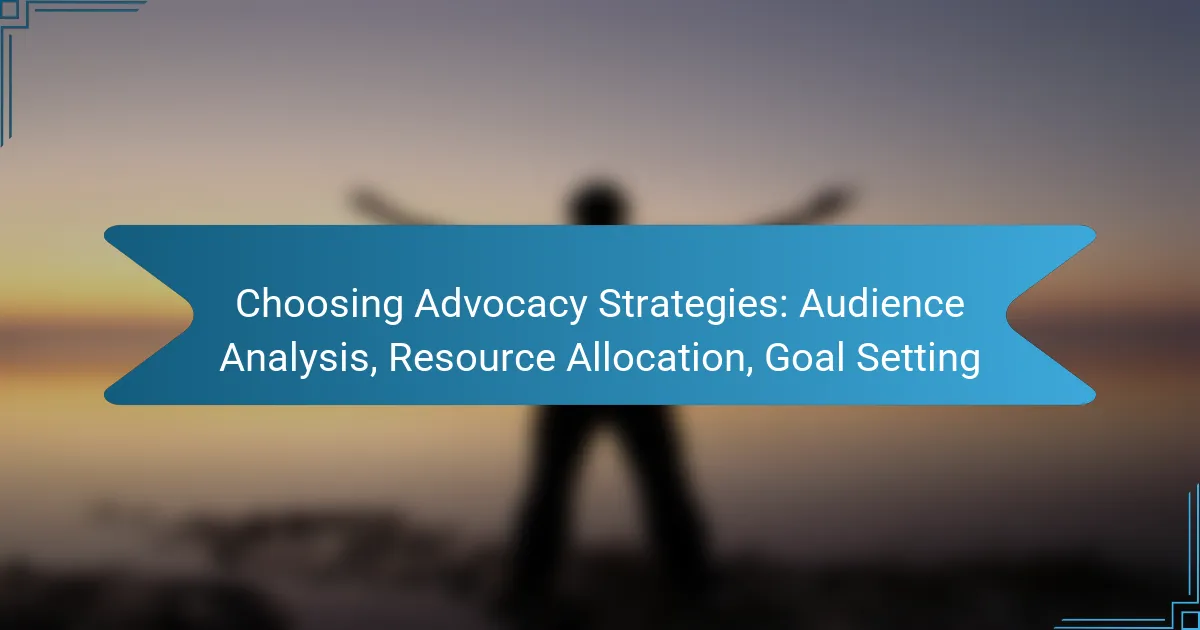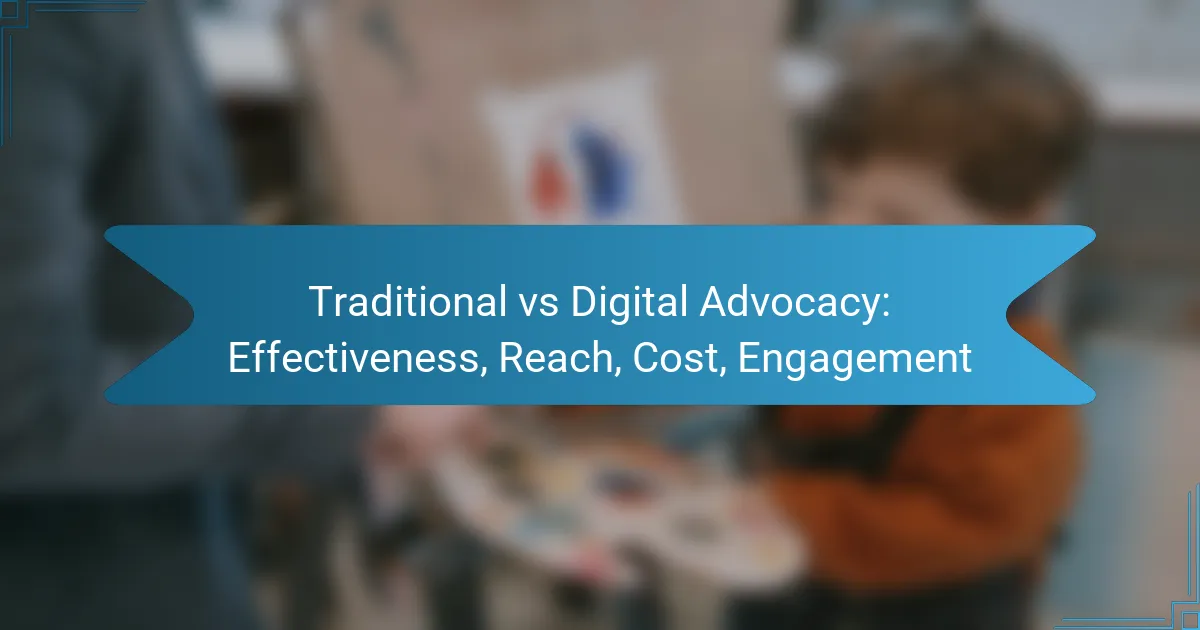Choosing the right advocacy strategies is crucial for effectively influencing decision-makers and mobilizing public support. By conducting a thorough audience analysis, organizations can tailor their approaches to resonate with specific groups, thereby enhancing the impact of their efforts. Additionally, careful resource allocation ensures that financial, human, and technological assets are utilized efficiently to achieve advocacy goals.

What Are Effective Advocacy Strategies in the UK?
Effective advocacy strategies in the UK involve a combination of community engagement, policy advocacy, public awareness campaigns, coalition building, and digital advocacy. These strategies aim to influence decision-makers and mobilize public support for specific causes.
Community Engagement
Community engagement focuses on building relationships with local stakeholders to understand their needs and perspectives. This can involve organizing meetings, workshops, or forums where community members can express their views and contribute to the advocacy efforts.
Consider using surveys or feedback forms to gather insights from the community. Engaging with diverse groups ensures that your advocacy reflects the interests of those affected by the issues at hand.
Policy Advocacy
Policy advocacy aims to influence legislation or regulations that affect specific issues. This involves researching existing policies, identifying gaps, and proposing changes that align with community needs.
Effective policy advocacy often includes drafting position papers or policy briefs that clearly outline your recommendations. Engaging with policymakers through meetings or written correspondence can also enhance your chances of success.
Public Awareness Campaigns
Public awareness campaigns seek to inform and educate the general public about specific issues. These campaigns can utilize various media channels, including social media, print, and broadcast media, to reach a wider audience.
When planning a campaign, set clear objectives and identify your target audience. Use compelling narratives and visuals to convey your message effectively, and consider partnerships with local organizations to amplify your reach.
Coalition Building
Coalition building involves forming alliances with other organizations or groups that share similar goals. This collective approach can strengthen your advocacy efforts by pooling resources and expertise.
To build a successful coalition, identify potential partners and establish common objectives. Regular communication and collaboration are essential to maintain momentum and ensure that all members are aligned with the coalition’s goals.
Digital Advocacy
Digital advocacy leverages online platforms to mobilize support and spread awareness. This includes using social media, email campaigns, and online petitions to engage supporters and influence decision-makers.
When implementing digital advocacy, create a strong online presence and utilize analytics to track engagement. Tailor your content to resonate with your audience, and encourage them to share your message to expand your reach.

How to Analyze Your Audience for Advocacy?
Analyzing your audience for advocacy involves understanding their characteristics, motivations, and behaviors to tailor your strategies effectively. This process ensures that your advocacy efforts resonate with the right people, increasing the likelihood of achieving your goals.
Demographic Profiling
Demographic profiling focuses on quantifiable characteristics such as age, gender, income, education, and location. For example, knowing that your audience primarily consists of young professionals in urban areas can guide your messaging and outreach methods. Collecting this data can be done through surveys, census data, or social media analytics.
When profiling demographics, consider using segmentation to identify specific groups within your audience. This allows for targeted strategies that address the unique needs and preferences of each segment, enhancing engagement and support.
Psychographic Insights
Psychographic insights delve into the attitudes, values, interests, and lifestyles of your audience. Understanding what drives your audience emotionally can help you craft messages that resonate on a deeper level. For instance, if your audience values sustainability, highlighting eco-friendly practices in your advocacy can strengthen their connection to your cause.
To gather psychographic data, consider conducting focus groups or in-depth interviews. This qualitative approach can reveal motivations and barriers that demographic data alone may overlook, allowing for a more comprehensive understanding of your audience.
Behavioral Analysis
Behavioral analysis examines how your audience interacts with your advocacy efforts, including their engagement levels, past actions, and response to different types of messaging. Tracking behaviors such as event attendance, social media interactions, or donation patterns can provide insights into what strategies are most effective.
Utilizing analytics tools can help you monitor these behaviors over time. Look for trends that indicate shifts in audience engagement, and be prepared to adapt your strategies accordingly. Avoid making assumptions based solely on demographics; instead, let behavioral data guide your decisions for more impactful advocacy.

What Resources Are Needed for Advocacy?
Effective advocacy requires a combination of financial, human, and technological resources. Understanding these needs helps organizations allocate their efforts efficiently and achieve their goals.
Financial Resources
Financial resources are essential for funding advocacy initiatives, including campaign materials, events, and outreach efforts. Organizations should assess their budgetary constraints and identify potential funding sources, such as grants, donations, or sponsorships.
When planning, consider allocating funds for both short-term and long-term advocacy goals. A well-structured budget can help prioritize spending and ensure that resources are used effectively. Aim for a balance between immediate needs and sustainable funding strategies.
Human Resources
Human resources encompass the people involved in advocacy efforts, including staff, volunteers, and stakeholders. It’s crucial to have a team with diverse skills, such as communication, research, and community engagement, to address various aspects of advocacy.
Recruiting and training volunteers can significantly enhance capacity without straining budgets. Establish clear roles and responsibilities to maximize efficiency and ensure that everyone understands their contributions to the advocacy goals.
Technological Tools
Technological tools play a vital role in modern advocacy, facilitating communication, data management, and outreach. Consider using platforms for social media management, email marketing, and data analysis to streamline efforts and reach broader audiences.
Investing in user-friendly tools can enhance engagement and improve the effectiveness of campaigns. Regularly evaluate the technology used to ensure it meets the evolving needs of your advocacy efforts and remains cost-effective.

How to Set Goals for Advocacy Efforts?
Setting goals for advocacy efforts involves defining clear, actionable objectives that guide your initiatives. Effective goals help focus resources and measure the success of your advocacy strategies.
SMART Goals Framework
The SMART framework is a widely used method for setting effective goals. SMART stands for Specific, Measurable, Achievable, Relevant, and Time-bound, ensuring that each goal is clear and attainable within a set timeframe.
For instance, instead of stating a goal like “increase awareness,” a SMART goal would be “increase awareness of our environmental campaign by 30% within six months through social media outreach.” This clarity helps in tracking progress and making necessary adjustments.
Short-term vs Long-term Goals
Short-term goals are typically achievable within a few months and serve as stepping stones toward larger objectives. For example, a short-term goal might involve organizing a community event to gather support for a specific issue.
Long-term goals, on the other hand, span several years and aim for broader impacts, such as influencing national policy changes. Balancing both types of goals is crucial for sustained advocacy success, as short-term wins can build momentum for long-term aspirations.
Measurable Outcomes
Measurable outcomes are essential for evaluating the effectiveness of your advocacy goals. These outcomes should be quantifiable indicators that reflect progress, such as the number of petitions signed, social media engagements, or policy changes achieved.
Establishing benchmarks at the outset allows for ongoing assessment. For example, if your goal is to increase community engagement, you might track attendance at events or the number of new volunteers recruited. Regularly reviewing these metrics helps refine strategies and improve overall impact.

What Criteria Should Guide Resource Allocation?
Resource allocation in advocacy should be guided by criteria that ensure effective use of funds and personnel to achieve desired outcomes. Key considerations include assessing the potential impact of initiatives, conducting cost-benefit analyses, and aligning resources with strategic goals.
Impact Assessment
Impact assessment evaluates the potential effects of advocacy strategies on target audiences and broader societal issues. This involves identifying key performance indicators (KPIs) that reflect the desired changes, such as increased awareness or policy shifts.
When assessing impact, consider both short-term and long-term outcomes. For example, a campaign aimed at environmental protection may initially focus on community engagement, while long-term goals could include legislative changes. Prioritize initiatives that demonstrate a clear path to significant impact.
Cost-Benefit Analysis
A cost-benefit analysis compares the expected costs of advocacy efforts against the anticipated benefits. This process helps determine whether the investment of resources is justified based on potential returns, such as increased funding or policy changes.
To conduct a cost-benefit analysis, list all potential costs, including staffing, materials, and outreach efforts. Then, estimate the benefits, which could be quantified in terms of financial gains or social improvements. A simple heuristic is to aim for a benefit-to-cost ratio of at least 2:1 to ensure effectiveness.

How to Measure the Success of Advocacy Strategies?
Measuring the success of advocacy strategies involves assessing their impact through specific metrics and outcomes. This process helps organizations understand what works, what doesn’t, and how to improve future efforts.
Key Performance Indicators (KPIs)
Key Performance Indicators (KPIs) are essential metrics that help evaluate the effectiveness of advocacy strategies. Common KPIs include engagement levels, policy changes, and public awareness. These indicators provide a clear picture of how well advocacy efforts are resonating with the target audience.
When selecting KPIs, consider both quantitative and qualitative measures. For example, you might track the number of social media shares or the increase in website traffic, alongside surveys that gauge public sentiment. This combination offers a comprehensive view of your advocacy’s reach and influence.
To effectively measure KPIs, set specific, measurable goals. For instance, aim for a 20% increase in social media engagement over six months or a certain number of meetings with policymakers. Regularly review these metrics to adjust strategies as needed and ensure alignment with overall advocacy objectives.



